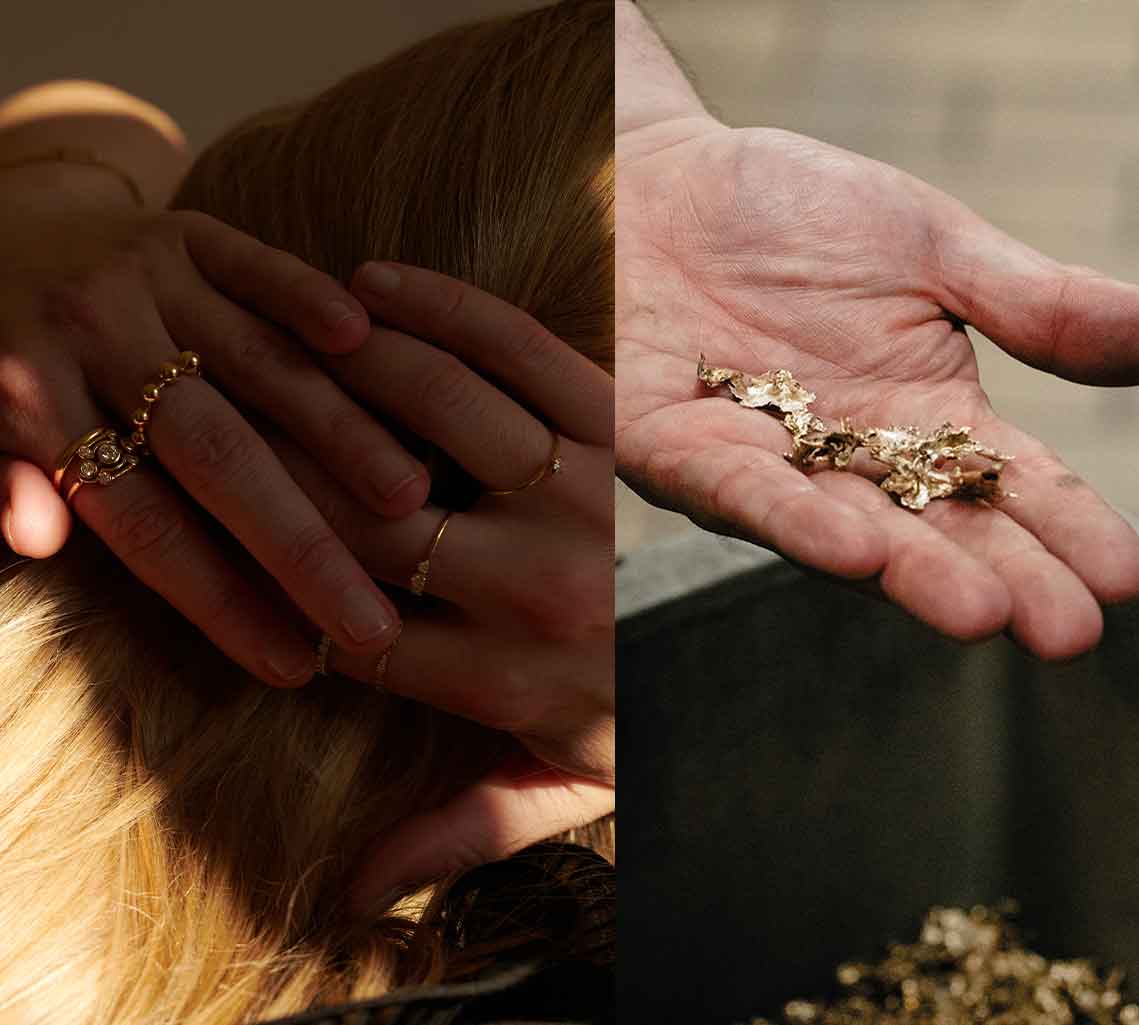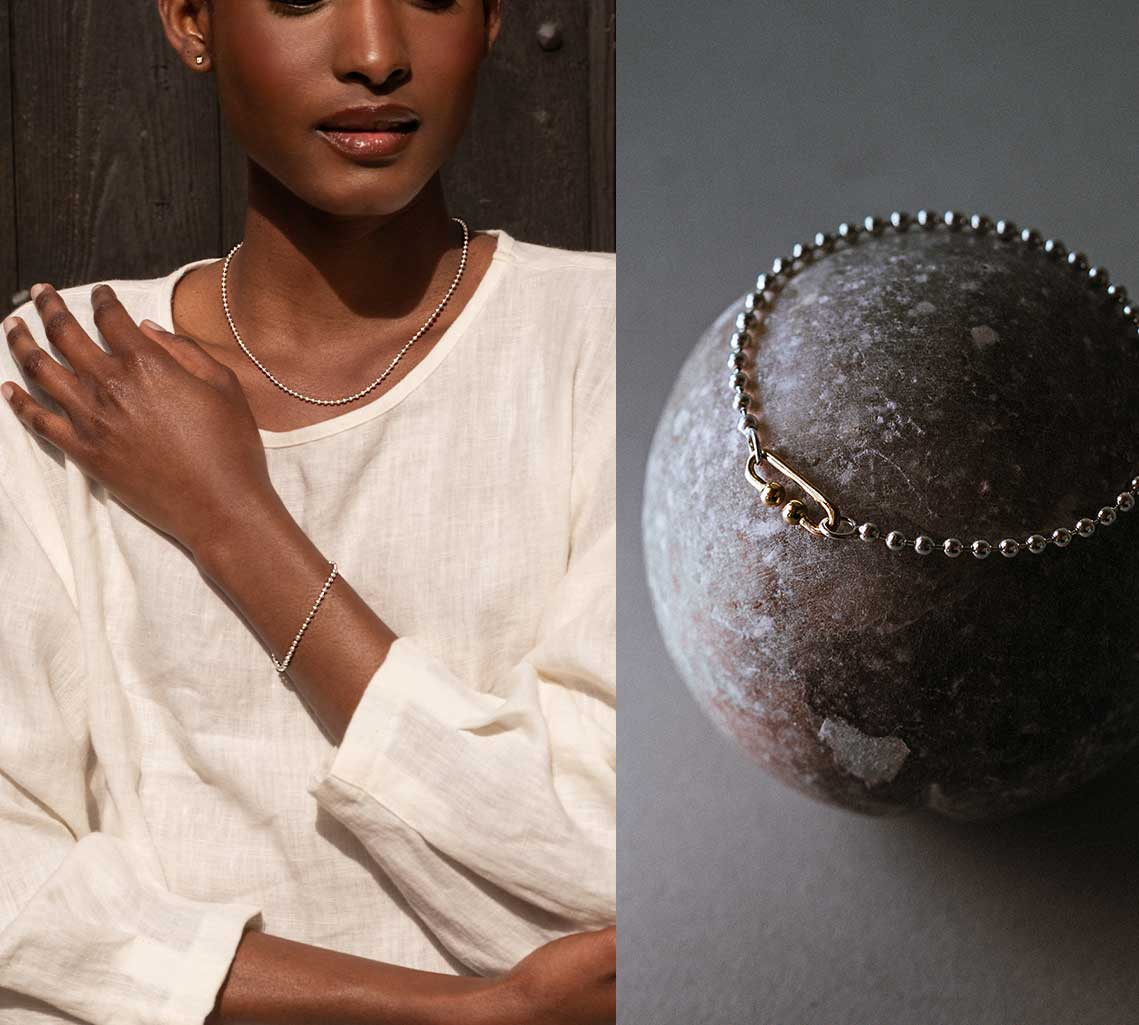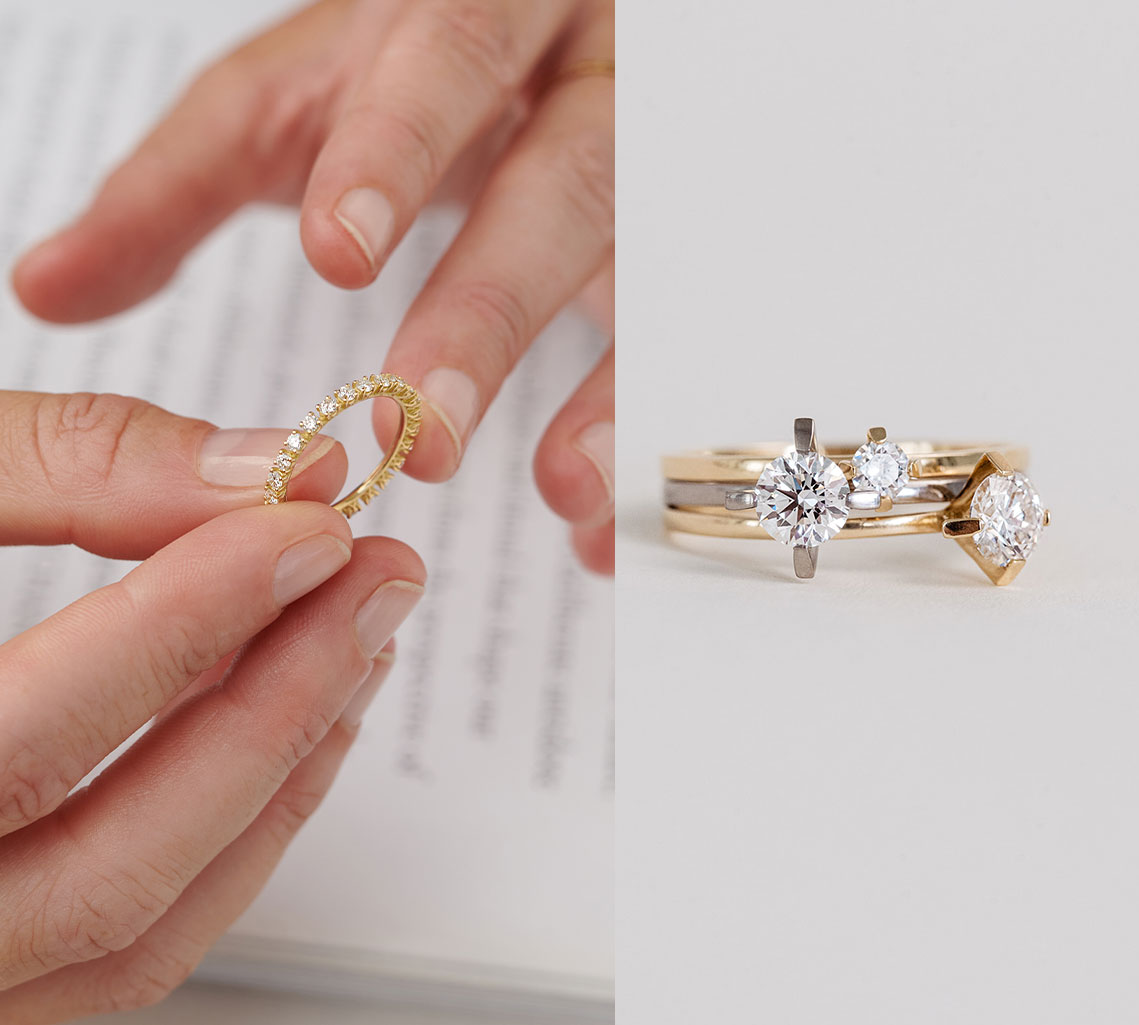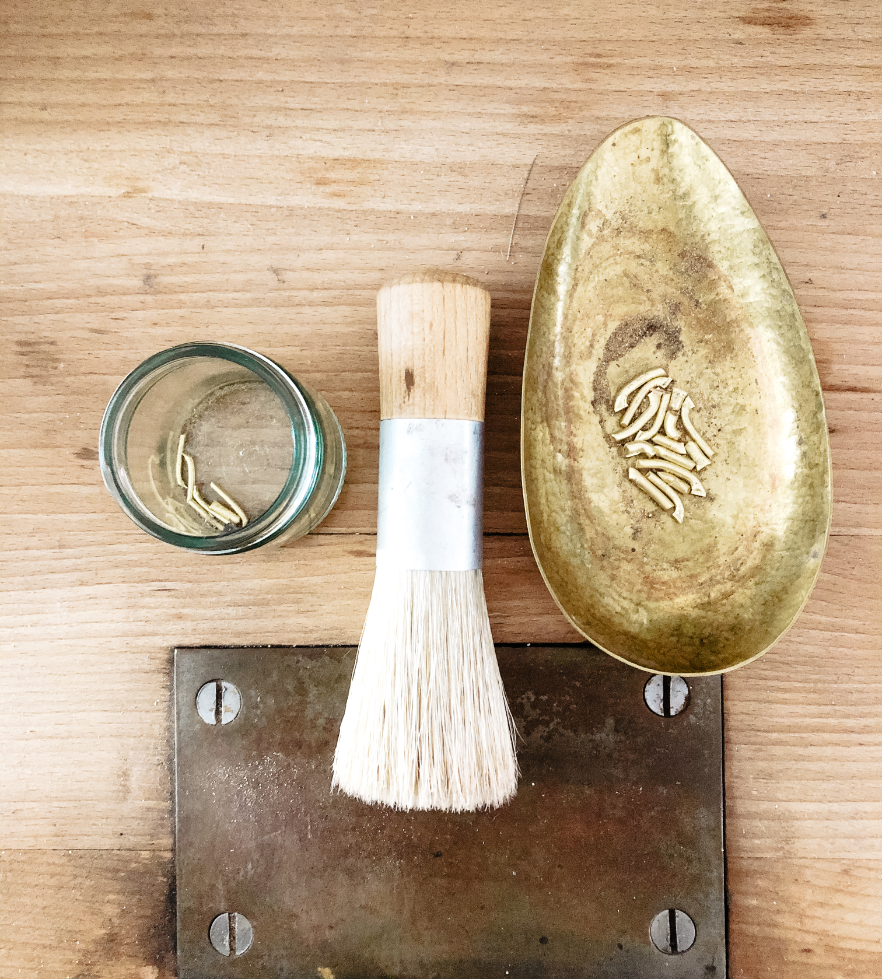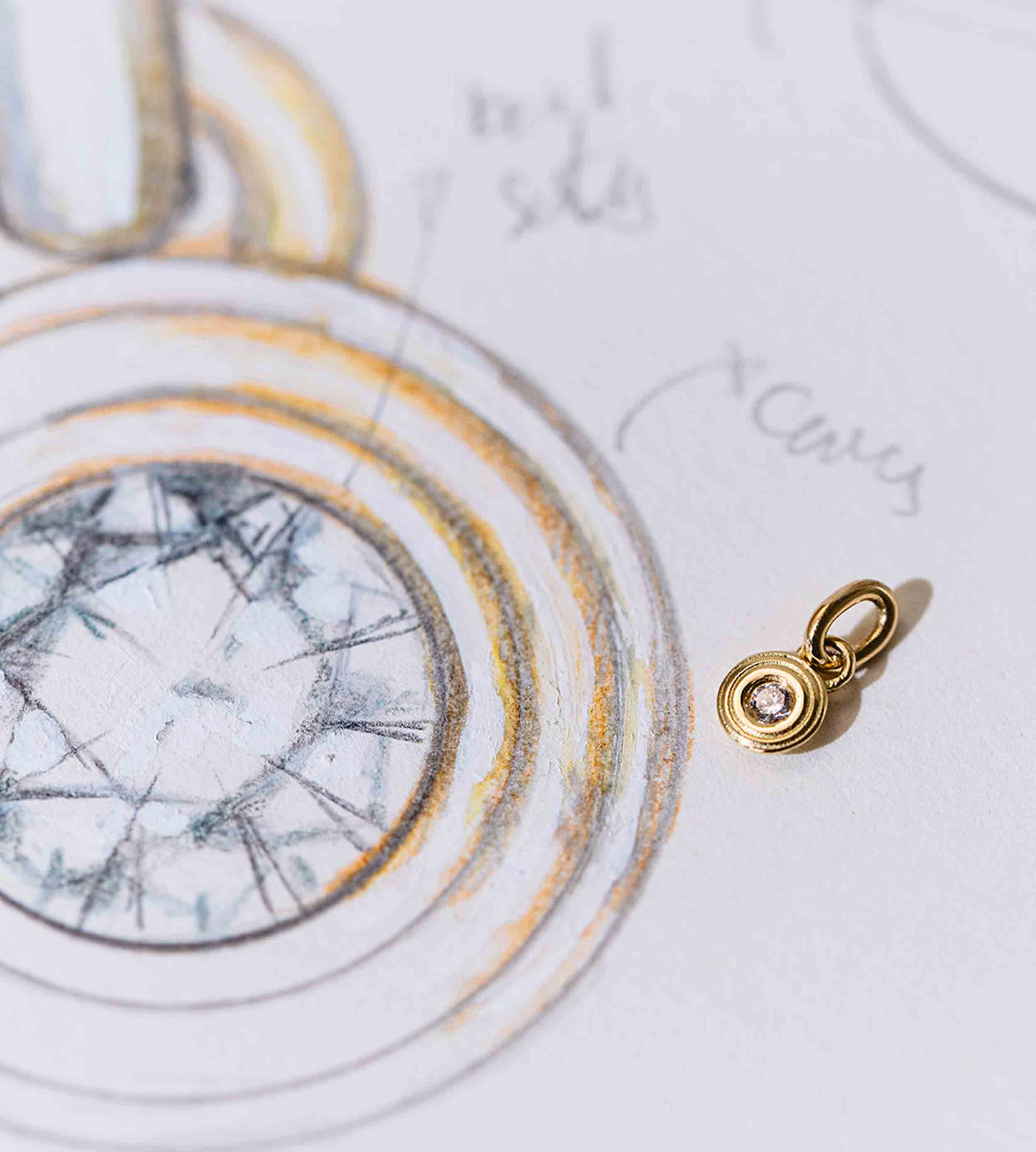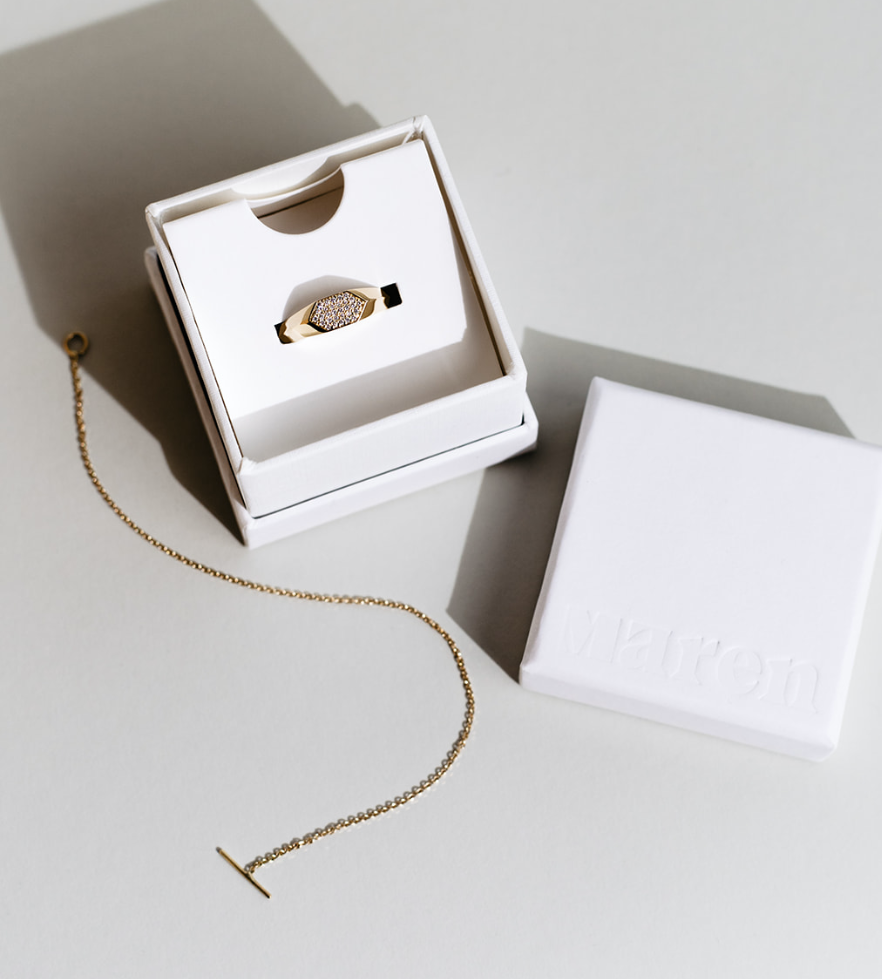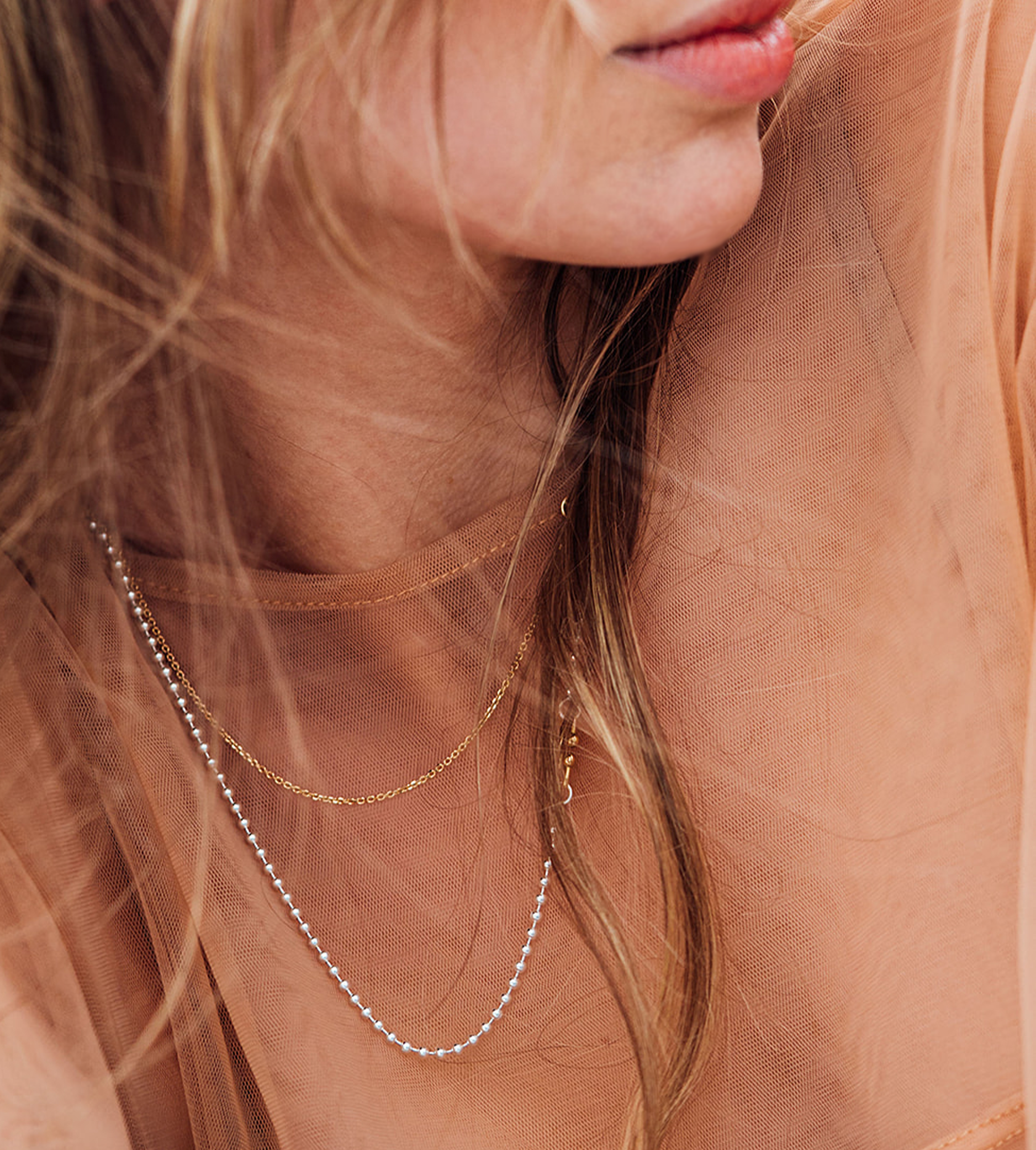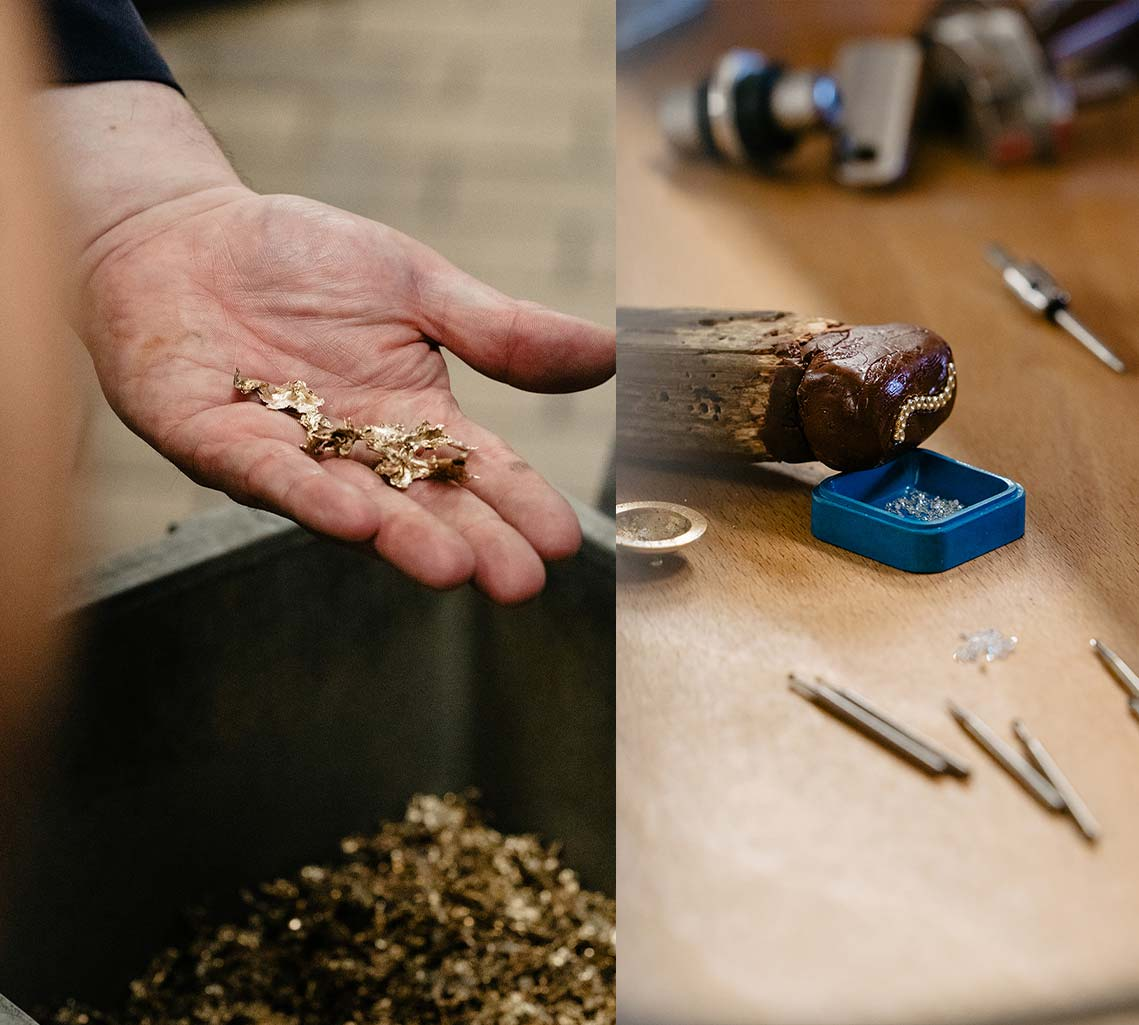
Material: The basis of our work
At Maren Jewellery, we use carefully selected sustainable materials to create jewelry that impresses not only with its beauty but also with its ethical and ecological production. Our philosophy is based on the belief that luxury and responsibility can go hand in hand.
The problem of the conventional jewelry industry is all too well known: exploitation of people and nature, environmental pollution, and ethically questionable practices. We believe it is time to resist this paradigm.
Our solution is simple yet effective: We rely on recycled gold and silver as well as synthetic eco-diamonds. This way, we can ensure that our jewelry not only looks good on you but also benefits our planet.
Our 18 karat recycled real gold is processed in Germany and offers the highest quality and durability. By using recycled gold, we minimize our ecological footprint and help reduce the negative impacts of gold mining.
Our diamonds do not come from questionable sources, but are produced in laboratories. These lab-grown diamonds are not only conflict-free but also environmentally friendly, as they do not require harmful mining processes.
Furthermore, we are committed to using sustainable materials for our packaging as well, in order to further minimize our ecological footprint.
At Maren Jewellery, we firmly believe that beauty should not come at the expense of people and nature. That’s why we rely on sustainable materials and transparent manufacturing processes, so you can wear our jewelry with a clear conscience.
Jewelry by material
faqs about our jewelry materials
What are the benefits of recycling gold?
Through recycling gold, the extraction and consumption of new, finite resources is avoided, as many production waste or old disposable goods already contain enough gold to be prepared for reuse.
Since gold can be melted down and reused without loss, recycling gold is an environmentally friendly and also a humane alternative.
Because gold mining is not only dangerous and harmful to the health of all miners, but is unfortunately also often practiced by children and heavily pollutes our waters, soils, and air through the use of cyanide and mercury.
The WWF, sowie der Verein Rettet den Regenwald Recycling gold is considered the most sustainable form of gold extraction and processing. It consumes 550 times less CO2 and 8.9 times less water than newly mined gold. Additionally, recycling gold can prevent tons of toxic mining waste from entering our water, the displacement of communities due to mining, or the deforestation of forests that are crucial for our biodiversity.
Since 48.6% of the gold demand is due to the jewelry industry's requests, choosing recycled gold can make a significant difference: Just imagine if all jewelry manufacturers used recycled gold.
What does the gold recycling process at Maren Jewelery look like?
For the recycled gold that we use at Maren Jewellery for our jewelry pieces, we work closely with our partner, who C.Hafner Minting Institution together, which carries out the gold recycling process for us.
All our valuable collected gold residues, which have originated from cast parts, filing waste, or polishing dust, are handed over to C.Hafner so that they can be melted down with further scrap material. For this, the scrap material is first weighed and then melted down, allowing the precious metal to be homogenized and subsequently cast into bars.
This bar will then have samples taken from it, which will be quartered with lead. The lead absorbs the precious metals in the crucible, only to evaporate in the heat. What remains is the precious metal grain. This grain is then hammered and rolled. Only now does the actual separation process begin – the separating or cutting of the precious metals. In aqua regia, the separation material dissolves. There, the various precious metals contained in the separation material separate from each other and can be recovered in pure form: palladium, platinum, and also gold.
At the end of the gold refining process, pure gold sponge is produced. This is melted down and granulated, and the result is impressive: recycled fine gold with 99.99 percent purity.
What are synthetic diamonds?
Synthetic diamonds are diamonds grown in a laboratory.
They are identical to natural diamonds in appearance, hardness, and chemical composition.
The advantage of synthetic diamonds lies in their sustainable and human-friendly extraction, as they do not burden our environment, nor do they endanger people in crisis areas.
For the production of synthetic diamonds, there are two techniques: the CVD method and the HTHP method.
At the Chemical Vapor Deposition (CVD) Diamonds are created in a plasma that is as hot as a small sun on Earth. Our partner Fenix Diamond uses this technique. Diamond Foundry It also cultivates using the CVD process and manufactures novel plasma reactors that generate such heat that atoms attach themselves to the natural diamond crystal lattice of a diamond, which is used as the basis in this process. In this method, more and more atoms stack on a thin foundation of diamond, thereby expanding the unique crystal structure of the seed diamond. Atom by atom, a pure, ornamental synthetic rough diamond of gemstone size grows.
HTHP stands for High Temperature, High PressureIn this process, which is modeled after the natural formation of diamonds, graphite-2H is placed in growth cells that are subjected to pressure from three sides in so-called cubic presses with up to 70,000 bar. Graphite-2H is a natural form of the chemical element carbon, which has a hexagonal crystal structure similar to that of a honeycomb. The interior of the growth cell is initially equipped with catalysts and seed diamonds and heated to about 1600-1700 degrees Celsius. Under these conditions, the graphite undergoes a physical-chemical process and the black powder grows into a transparent diamond. Our partner Swiss Diamond Vision works with the HPHT process to produce lab-grown synthetic eco diamonds.
Are artificial, lab-grown diamonds sustainable?
The process of growing diamonds synthetically in the laboratory ensures that no people in crisis areas were endangered in order to extract the diamonds.
Although laboratory-grown diamonds are just as pure and unique as natural diamonds, their origin is 100% guaranteed:
Our synthetic diamonds that we use for Maren Jewelery come from Switzerland, India or America. All of our gemstones are 100% conflict-free.
In addition, diamonds grown in the laboratory are resource-efficient. If 1ct diamond is mined in the traditional way, up to 200 tons of earth have to be moved. Moving these masses requires an incredible amount of energy.
Our synthetic diamonds are significantly more environmentally friendly than natural diamonds.
They consume 4,79,19 times less CO2 than normal diamonds. The high energy required for the breeding process is also problematic, but this is taken into account by our partner Diamond Foundry, which, like Maren Jewellery, is a CO2-neutral company..
